Instruction Manual
www.hannainst.com
Dear Customer,
Thank you for choosing a Hanna Product.
Please read the instructions carefully before using the chemical
test kit. It will provide you with the necessary information for
correct use of the kit.
Remove the chemical test kit from the packing material and
examine it carefully to make sure that no damage has
occurred during shipping. If there is any noticeable damage,
notify your Dealer or the nearest Hanna office immediately.
Each kit is supplied with:
•
Reagent 1, 1 bottle with dropper (30 mL);
•
Reagent 2, 1 bottle with dropper (10 mL);
•
Reagent 3, 1 bottle (120 mL);
•
2 beakers (10 mL and 50 mL);
•
1 graduated syringe.
Note: Any damaged or defective item must be returned in
its original packing materials.
HI 3812
Hardness Test Kit
ISTR3812 09/99 PRINTED IN ITALY
In history, water hardness was defined by the capacity of
water to precipitate soap. The ionic species in the water
causing the precipitation was later found to be primarily
calcium and magnesium. In the present, therefore, water
hardness is actually a quantitative measure of these ions in
the water sample. It is also now known that certain other
ion species, such as iron, zinc and manganese, contribute to
the overall water hardness. The measure and subsequent
control of water hardness is essential to prevent scaling and
clogging in water pipes. The Hanna hardness test kit makes
monitoring easy, quick and safe. The compact size provides
the versatility to use the kit anywhere. The design makes the
kit easy to handle and, except for Reagent 3, practically
prevents accidental injury or damage due to spills.
Range 0 to 30 mg/L (ppm) CaCO
3
0 to 300 mg/L (ppm) CaCO
3
Smallest Increment 0.3 mg/L [in the 0-30 mg/L range]
3 mg/L [in the 0-300 mg/L range]
Analysis Method EDTA titration
Sample Size 5 mL and 50 mL (average)
Number of Tests 100 (average)
Case Dimensions 200x120x60 mm (7.9x4.7x2.4")
Shipping Weight 460 g (1 lb.)
SPECIFICATIONSSPECIFICATIONS
SPECIFICATIONSSPECIFICATIONS
SPECIFICATIONS
SIGNIFICANCE AND USESIGNIFICANCE AND USE
SIGNIFICANCE AND USESIGNIFICANCE AND USE
SIGNIFICANCE AND USE
CHEMICAL REACTIONCHEMICAL REACTION
CHEMICAL REACTIONCHEMICAL REACTION
CHEMICAL REACTION
The hardness level as mg/L (ppm) calcium carbonate is deter-
mined by an EDTA (ethylene-diamine-tetraacetic acid) titration.
The solution is first adjusted to a pH of 10 using a buffer
solution. The indicator chelates with metal ions such as mag-
nesium or calcium to form a red colored complex. As EDTA is
added, metal ions complex with it. After all the free metal ions
have been complexed, an excess EDTA removes the metal ions
complexed with the indicator to form a blue colored solution.
This color change from red to blue is the endpoint of the
titration.
READ ALL THE INSTRUCTIONS BEFORE USING THE TEST KIT
LOOK AT THE BACK PAGE FOR THE ILLUSTRATED PROCEDURE
Note: Push and twist pipet tip into tapered end of syringe
ensuring an air-tight fit.
HIGH RANGE – 0 to 300 mg/L CaCO
3
• Remove the cap from the small plas-
tic vessel. Rinse the plastic vessel
with the water sample, fill to the 5
mL mark and replace the cap.
• Add 5 drops of Reagent 1 through the cap port and mix
carefully swirling the vessel in tight circles.
INSTRUCTIONSINSTRUCTIONS
INSTRUCTIONSINSTRUCTIONS
INSTRUCTIONS
• Add 1 drop of Reagent 2 through the cap port and mix as
described above. The solution becomes a red-violet color.
• Take the titration syringe and push the plunger
completely into the syringe. Insert tip into Re-
agent 3 and pull the plunger out until the lower
edge of the seal is on the 0 mark of the syringe.
• Place the syringe tip into the cap port of the
plastic vessel and slowly add the titration solu-
tion dropwise, swirling to mix after each drop.
Continue adding the titration solution until the
solution becomes purple, then mix for 15 sec-
onds after each additional drop until the solution
turns blue.
• Read off the milliliters of titration solution from the syringe
scale and multiply by 300 to obtain mg/L (ppm) CaCO
3
.
LOW RANGE – 0 to 30 mg/L CaCO
3
If result is lower than 30 mg/L, the precision of the test can
be improved by following the steps below.
• Remove the cap from the large
plastic vessel. Rinse it with the
water sample, fill to the 50 mL
mark and replace the cap.
• Proceed with the titration as for the high range test.
• Read off the milliliters of titration solution from the syringe
scale and multiply by 30 to obtain mg/L (ppm) CaCO
3
.
x 300 = mg/L CaCO
3
x 30 = mg/L CaCO
3
REFERENCESREFERENCES
REFERENCESREFERENCES
REFERENCES
Standard Methods for the Examination of Water and Waste-
water, 16
th
Edition, 1985, p. 210-214.
1987 Annual Book of ASTM Standard, vol. 11.01 Water (1),
p. 212-215.
HEALTH AND SAFETYHEALTH AND SAFETY
HEALTH AND SAFETYHEALTH AND SAFETY
HEALTH AND SAFETY
The chemicals contained in this test kit may be hazardous if
improperly handled. Read Health and Safety Data Sheets
before performing the test.

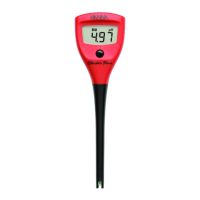
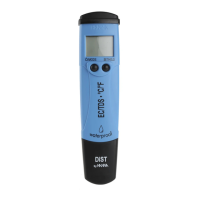

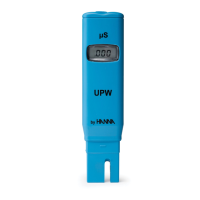
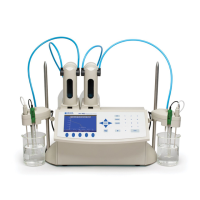
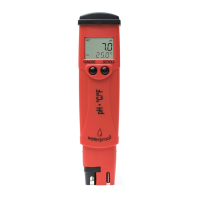
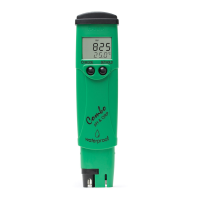

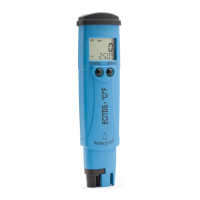
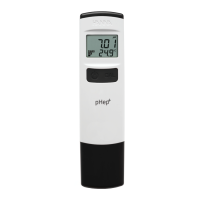
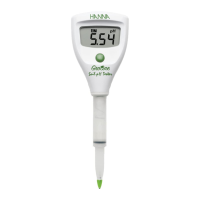
